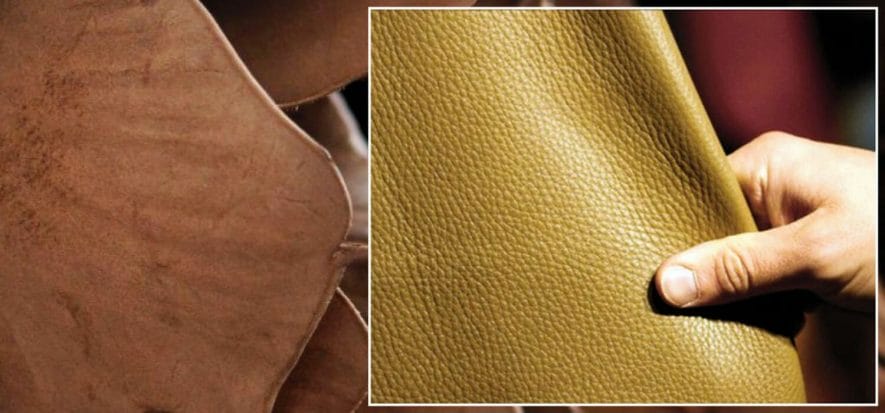They do not offer the same resistance to breaking and tearing, nor the same permeability to water vapour, much less the same capacity to absorb water vapour. Whatever manufacturers say, eco-friendly alternatives are no better than leather. And, on balance, they are not even that much eco: because often the materials are composed, in whole or in part, of plastic derivatives. Trend Alternatives for Leather clarifies the hierarchies, performance and sustainability, between leather and its imitations. Leading the study is the independent German research institute FILK (Forschungsinstitut für Leder und Kunststoffbahnen), which shared it on the open source scientific platform MDPI (Multidisciplinary Digital Publishing Institute).
Eco alternatives
Cotance, the European confederation of national tanning associations, has made a series of materials available to FILK researchers “currently referred to in the media as alternative, in various aspects, to leather”. Objective: “To verify the technical properties”. In other words, “the analysis was conducted by carrying out standardised physical and chemical tests on 9 alternatives materials that have recently entered the market, on a plastic material and, as a reference, also on real leather”. The conclusions, we said, are unequivocal: none of the 9 alternative materials can even be said to be equal to leather from the point of view of performance and, therefore, of durability. “In particular, the absorption of water vapour and its permeability scored significantly lower than leather”. Which, “was also superior in durability tests (resistance to bending and tearing)”. Whatever their promoters’ marketing departments say.
(Alleged) sustainability
The question does not end there. FILK study highlights a further criticality. These materials “push on the lever of green marketing – recalls Cotance -, even if they are not absolutely green”. What is green marketing all about? The producers of the alternatives “not only imitate leather in appearance and touch, but use the word in a way that is misleading and completely non-transparent to the consumer”.
Luckily, the Leather Decree has come to bring order to the subject in Italy. But the fact remains that expressions such as “faux leather or cactus leather” still recur in publications: “Materials that have nothing to do with leather, and which should be referred to according to their characteristics”. Instead, they choose to be “leather’s antagonist” on the basis of greater sustainability.
Which is completely presumed. The German survey concluded that the sample of materials can be divided into three groups. The first provides a predominantly natural base “that does not require the addition of plastic components”. But the second and third foresee the “prevalent presence of plastic components” or, even, the “exclusive use of plastic derivatives: for example, PVC or PUR”.
The Desserto case
Among the cases of misleading terminology is cited “cactus leather”. And it is no coincidence, because the Mexican Desserto also ended up in the FILK investigation. This is “a very significant example – reports Cotance – because the material is extremely trending”. Well? “In light of the analysis, it was found that it contains 65% polyurethane”. Desserto “turns out to be a mixture of natural raw materials (cactus fibres, in fact) and plastic – concludes the press release -: a supporting fabric in polyester covered with two layers of polyurethane”. And these should be the “eco” alternatives?
Read also:











